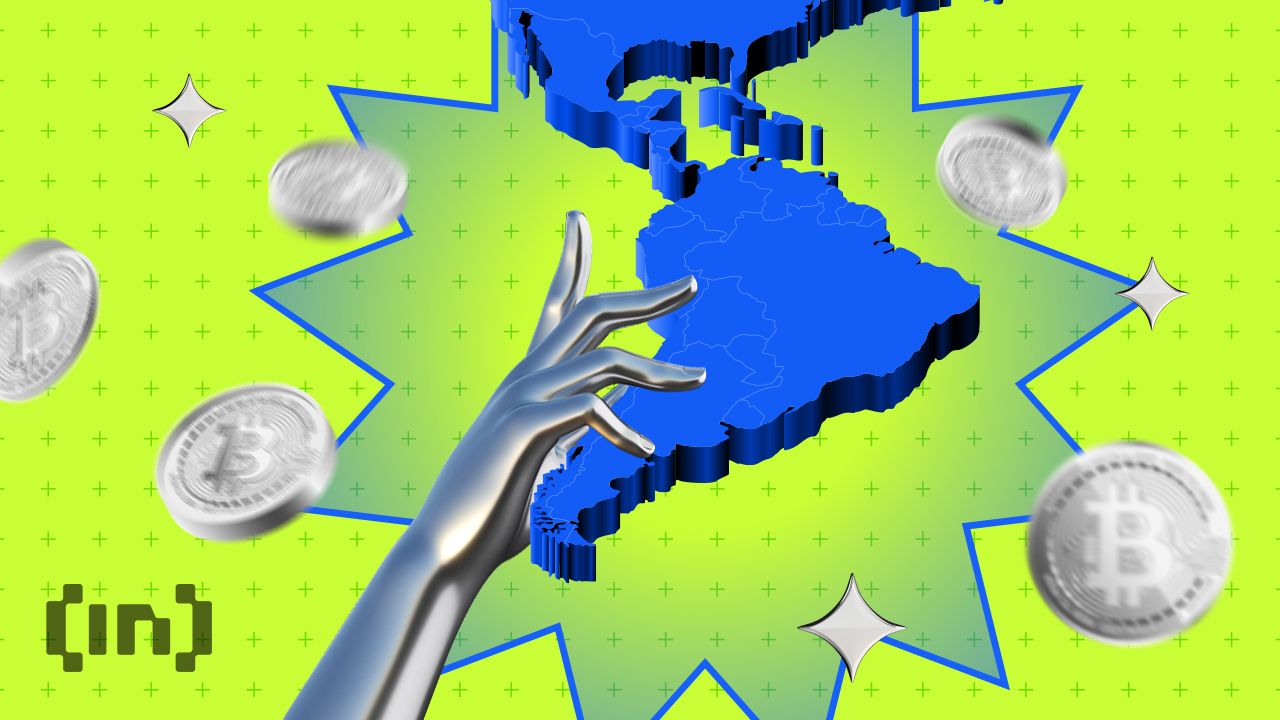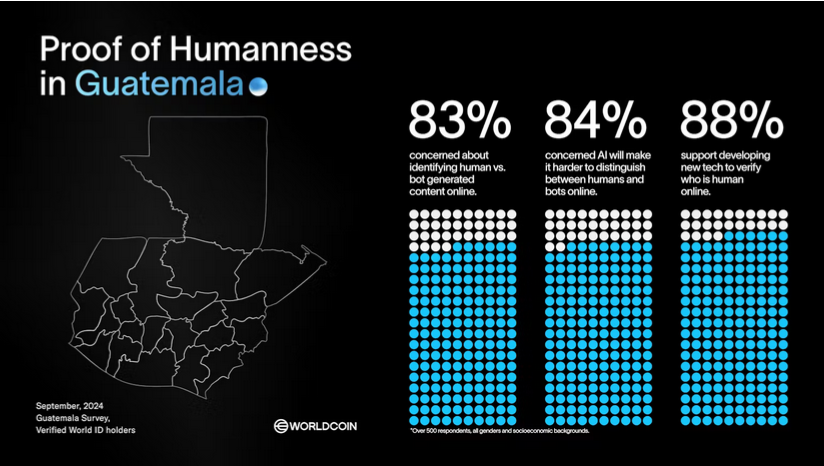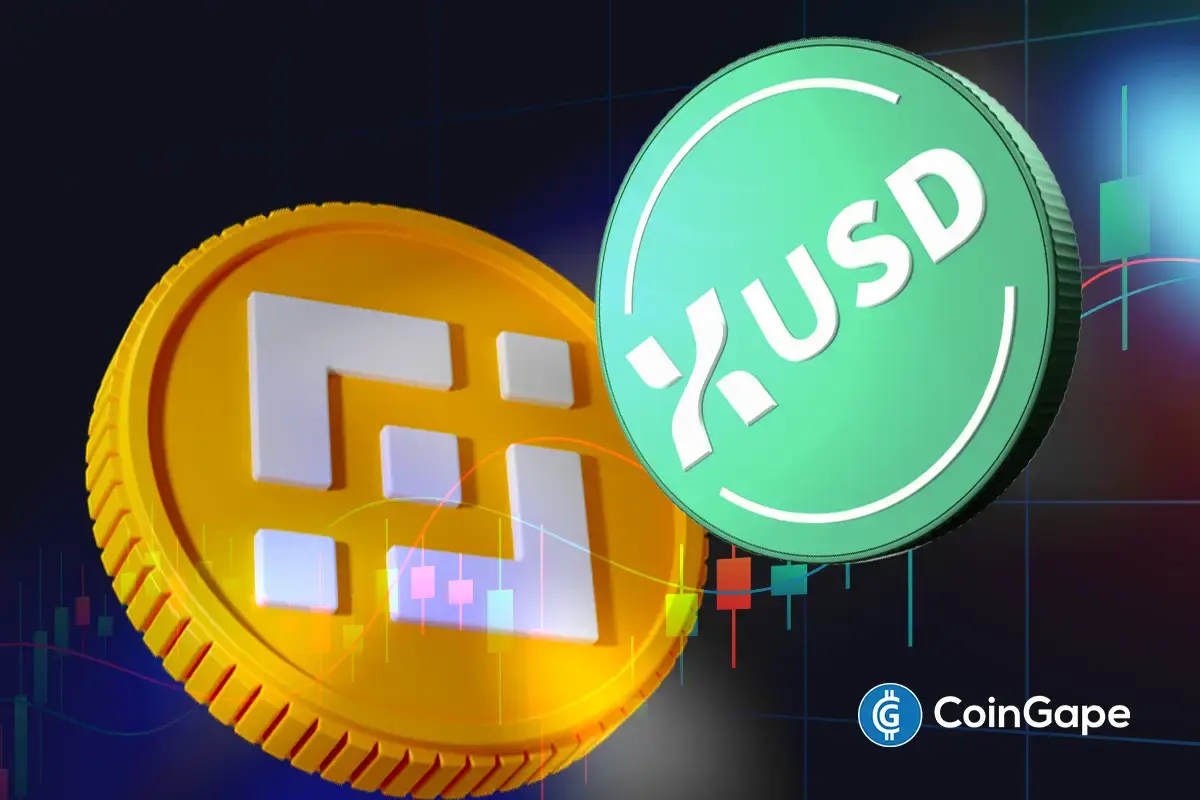Market
Worldcoin Expands to Guatemala and More

Latin America (LATAM) continues to assert its growing importance in the global crypto ecosystem. In Colombia, Nexo has joined the Fintech Association, marking a significant step in its regional expansion. Meanwhile, Worldcoin is extending its World ID verification service to Guatemala, addressing digital identity issues in a world increasingly dominated by bots.
This article explores these developments and more, including crypto adoption surges in Bolivia and Brazil’s advancement in developing its central bank digital currency (CBDC).
Bolivia’s Crypto Transactions Surge Following Ban Lift
Bolivia has seen a rapid rise in cryptocurrency activity since its central bank lifted the long-standing ban on digital assets in June 2024. The Central Bank of Bolivia (BCB) reported 100% growth in crypto transactions over just three months. Between July and August, the average crypto trading volume in Bolivia soared to $15.6 million, doubling from the $7.6 million recorded in the first half of the year.
Read more: Crypto Regulation: What Are the Benefits and Drawbacks?
Stablecoins have emerged as the preferred choice for many Bolivians, offering an alternative for e-commerce and international transactions. BCB President Edwin Rojas highlighted the significance of this shift.
“The use of virtual assets is a favorable step towards modernization and economic integration with the world to strengthen international commercial and financial activities. Since the regulation came into force, the population has an alternative mechanism to process transfers to and from abroad and electronic commerce payments, among other activities,” Rojas stated.
Despite these gains, Deputy Mariela Baldivieso, a proponent of cryptocurrency, stresses that more work is needed. Bolivia still faces challenges, particularly in the areas of financial literacy and regulatory infrastructure. Baldivieso believes that with stronger education initiatives and clearer regulations, Bolivia could become a hub for crypto innovation in the future.
Worldcoin Expands Digital ID Services in Guatemala
Worldcoin continues its expansion in Latin America by launching its World ID verification service in Guatemala. As of September 25, Guatemalan users can use Worldcoin’s orb technology to verify their identity as humans, countering the growing concern over online bots. With a quick download of the World App and an appointment at one of the orb locations, users can ensure their online interactions are genuine.
In a recent survey, 83% of Guatemalans expressed concerns about distinguishing between human-generated and bot-generated content online. The launch of World ID is seen as a solution to this issue, providing increased security and transparency in digital interactions.

Worldcoin’s expansion into Guatemala follows its previous launches in Ecuador and Mexico, where the technology has already gained traction. However, as Worldcoin grows in Latin America, it has sparked privacy debates in countries like Argentina, where concerns over biometric data protection have prompted regulatory discussions.
Nexo Eyes Growth in Colombia with Fintech Association Membership
On September 26, crypto lending platform Nexo officially joined the Colombia Fintech Association. This partnership enables Nexo to integrate into Colombia’s financial environment and offer digital asset solutions. Joining the association also enables Nexo to further engage with the local fintech community and explore synergies within the sector.
In a statement shared with BeInCrypto, Elitsa Taskova, Nexo’s Chief Product Officer, stated that the partnership with the Colombia Fintech Association reflects Nexo’s commitment to providing advanced digital asset solutions.
“Colombia presents a unique opportunity: with an astounding 92.1% of the population already having access to crypto-related services, the country is making a notable leap towards digital finance. […] We’re not just entering a market; we’re empowering millions of Colombians with accessible digital asset tools and shaping the future of finance in Latin America,” Taskova said.
These solutions meet the country’s growing demand for stablecoins and secure cross-border transactions. Over the past year, Nexo has observed a 73% rise in local clients using its crypto-yield products. Colombia’s interest in cryptocurrencies, particularly stablecoins, has been driven by remittances and a growing need for digital financial services.
Paraguay Develops World’s First National Blockchain to Push Sovereignty
Paraguay is making waves with the development of Legaledger, the world’s first third-generation blockchain network with national sovereignty. The Paraguayan Blockchain Chamber drives this initiative, aiming to provide secure blockchain-based solutions for the public and private sectors. These solutions encompass financial, civil, and military transactions.
Ricardo Prieto, the director of the Blockchain Chamber, explained that Legaledger is built on Hyperledger technology. It is designed to offer legal certainty in blockchain transactions, addressing concerns over security and fraud.
“Our blockchain network model is fractal. […] It can be implemented in a company, conglomerate, state, and country, with the same schematic design, and all would remain interoperable for the purposes of what we call sequencing, publication of the procedure or transaction, including international operations,” Prieto explained.
Through its sovereign blockchain model, Legaledger aims to position Paraguay as a global leader in blockchain governance and innovation. The organization plans to expand its solutions internationally by 2026.
Brazil’s CBDC Initiative DREX Enters Second Phase of Development
The Central Bank of Brazil is making progress with its CBDC project—DREX. The institution recently entered the second phase of its DREX pilot program. This phase focuses on 13 strategic projects that will test the viability of smart contract-based financial services.
“We will also test the use of assets not regulated by the Central Bank. To this end, we are working together with the Securities and Exchange Commission (CVM). Other regulators have also shown interest in testing operations with assets under their jurisdiction in order to expand the usability of the platform,” Fabio Araújo, Coordinator of the Drex Initiative and Consultant of the Department of Banking Operations and Payment System of Brazil’s Central Bank, elaborated.
The projects cover various sectors, including international trade financing, real estate transactions, and credit collateralized in public securities. Major financial players such as Bradesco, Itaú, and Santander are part of the consortium leading the development of DREX, which focuses on privacy and regulatory compliance.
Read more: What Is Fiat Currency? How Does It Differ From Cryptocurrency?
Brazil’s push toward a CBDC is part of its broader strategy to modernize its financial infrastructure. The country plans to roll out more advanced digital solutions by mid-2025.
Disclaimer
In adherence to the Trust Project guidelines, BeInCrypto is committed to unbiased, transparent reporting. This news article aims to provide accurate, timely information. However, readers are advised to verify facts independently and consult with a professional before making any decisions based on this content. Please note that our Terms and Conditions, Privacy Policy, and Disclaimers have been updated.
Market
Despite an 18% Drop, XRP’s Exchange Supply Hits Lows—Bullish Setup Ahead?

Reason to trust

Strict editorial policy that focuses on accuracy, relevance, and impartiality
Created by industry experts and meticulously reviewed
The highest standards in reporting and publishing
Strict editorial policy that focuses on accuracy, relevance, and impartiality
Morbi pretium leo et nisl aliquam mollis. Quisque arcu lorem, ultricies quis pellentesque nec, ullamcorper eu odio.
XRP has been trading under pressure in recent weeks, losing much of the momentum it built during its late 2024 to early 2025 rally. After reaching highs above $3.40, the asset has experienced an 18.3% decline over the past month, reflecting broader market softness.
At the time of writing, XRP trades significantly below its peak at a price of $2.06, with subdued investor activity and falling market participation across both spot and derivatives markets.
Related Reading
XRP On-Chain Activity Slows, But Price Remains Relatively Stable
Amid XRP’s decline, a CryptoQuant analyst known as EgyHash has recently shared his analysis on the altcoin in a post titled, “XRP’s Market Paradox: With Ledger Activity Dipping 80%, Is a Rebound on the Horizon?”
According to EgyHash, XRP’s on-chain and futures market data presents a mixed picture—declining activity but resilience in price. EgyHash noted that XRP Ledger activity has fallen sharply since December, with the percentage of active addresses down by 80%.
Similar declines have been observed in the futures market, where open interest has dropped roughly 70% from its highs, and funding rates have occasionally turned negative.

He added that the Estimated Leverage Ratio, which gauges average user leverage by comparing open interest to coin reserves, has also dropped significantly.
Despite these indicators pointing to weakening momentum, the altcoin’s price has only declined about 35% from its peak. This is a milder correction compared to other assets such as Ethereum, which has fallen roughly 60% over the same period.
Additionally, the altcoin’s Exchange Reserve has continued to decline, reaching levels last observed in July 2023. Lower reserves typically suggest that fewer tokens are available for immediate sale, a factor that can help support prices during market downturns.

According to EgyHash, this trend, along with relatively stable pricing, could indicate growing long-term confidence in the asset.
Institutional Developments Could Strengthen Market Sentiment
While on-chain metrics remain a focus, institutional developments may also play a role in shaping XRP’s future trajectory. Hong Kong-based investment firm HashKey Capital recently announced the launch of the HashKey XRP Tracker Fund—the first XRP-focused investment vehicle in Asia.
Backed by Ripple as the anchor investor, the fund is expected to transition into an exchange-traded fund (ETF) in the future. The initiative is designed to attract more institutional capital into the XRP ecosystem.
HashKey Capital is launching Asia’s first XRP Tracker Fund—with @Ripple as an early investor.
This marks a major step in expanding institutional access to XRP, the third-largest token by market cap. 🧵👇
— HashKey Capital (@HashKey_Capital) April 18, 2025
HashKey Capital has also indicated that this collaboration with Ripple could lead to further projects, including tokenized investment products and decentralized finance (DeFi) solutions.
Related Reading
Vivien Wong, a partner at HashKey, emphasized the strategic value of integrating Ripple’s network with regulated investment infrastructure across Asia.
Although the altcoin faces near-term pressure, long-term developments, including decreasing exchange reserves and rising institutional interest, may support its recovery as the broader market stabilizes.
Featured image created with DALL-E, Chart from TradingView
Market
Matchain’s Petrix Barbosa Talks the Future of Digital Identity


In an engaging session during Paris Blockchain Week, BeInCrypto caught up with Petrix Barbosa, the innovative mind behind Matchain, a blockchain venture that’s reshaping how digital identity and data sovereignty are approached.
Barbosa, who transitioned from a successful career as a venture capitalist, where he managed investments across 250 projects, brings a wealth of experience and a unique perspective to the blockchain landscape. Petrix Barbosa’s insights reveal a compelling vision for the future of blockchain, focusing on user empowerment and innovative use of technology to solve enduring problems in digital identity and data management.
Petrix Barbosa Discusses Matchain and its Mission
Matchain is a layer 2 blockchain platform that primarily addresses the challenges of identity and data sovereignty. Our mission is to empower users by giving them control over their digital identities and data, thus ensuring that they’re the primary beneficiaries of their online presence.
Barbosa on His Pivot from Venture Capital
In my time as an investor, I witnessed many great ideas fail to reach their potential due to the lack of a substantial user base or poor market timing. This inspired me to transition from funding projects to creating a platform that not only serves my vision but also provides tangible solutions to widespread issues in the blockchain community—primarily, user engagement and application.
Matchain’s Innovations in the Area of Identity Sovereignty
Matchain introduces a novel approach to managing digital identity. Unlike traditional models where user data is siloed across various platforms, Matchain allows users to have a single digital identity that spans across both Web2 and Web3. This is crucial for enabling a seamless transition and interaction between these two worlds.
How Matchain Integrates Existing Web2 Infrastructure
Our platform acts as a bridge between the decentralized ecosystem of Web3 and the more traditional Web2 infrastructure. By allowing users to manage their digital identities across both platforms, we facilitate a smoother interaction that enhances user experience while maintaining high security and trust.
Future Developments From Matchain
Looking ahead, we aim to expand our user base significantly. Currently, we are backed by strategic partnerships, like the one with Paris Saint-Germain, which not only broadens our exposure but also integrates our technology into mainstream applications.
In the next two years, we plan to onboard millions of users, leveraging our innovative solutions to enhance their digital interactions.
Barbosa on Unique Challenges in Developing Matchain
The biggest challenge was shifting the focus from simply creating a blockchain solution to ensuring it was user-centric and capable of addressing real-world problems. This involved integrating AI to manage and analyze data effectively, ensuring that our platform could deliver personalized and contextually relevant experiences to users.
Matchain Over the Next Five Years
In five years, I envision Matchain at the forefront of blockchain technology, leading the charge in digital identity management and data sovereignty. Our platform will likely become a critical tool for users and companies looking to navigate the complexities of the digital age securely and efficiently.
Disclaimer
In compliance with the Trust Project guidelines, this opinion article presents the author’s perspective and may not necessarily reflect the views of BeInCrypto. BeInCrypto remains committed to transparent reporting and upholding the highest standards of journalism. Readers are advised to verify information independently and consult with a professional before making decisions based on this content. Please note that our Terms and Conditions, Privacy Policy, and Disclaimers have been updated.
Market
Base Launches Strong, But Content Coins Draw Doubt

Content Coins are a new trend gaining attention in the crypto space, especially on Base. They are positioned as digital content with value driven by culture and virality. Supporters see them as a new form of expression.
Critics say they’re just meme coins with a different name. Base is pushing the idea forward, hoping it helps the chain stand out from the rest.
Are Content Coins Really Different From Meme Coins?
Content coins are a new concept gaining traction within crypto communities, especially on Base chain. According to Base founder Jesse Pollak, a content coin “represents a single piece of content,” with the core idea being that the coin is the content and the content is the coin — no more, no less.
These tokens are often created in a specific context, either on platforms like Zora.
Essentially, creators design them to function as standalone pieces of digital content, driving the token’s value through cultural impact, virality, or meme-worthiness—rather than any utility or fundamental backing.

Despite the growing popularity of the term, not everyone is convinced. User Kash (@kashdhanda) dismissed the label, saying, “contentcoins are a silly name for memecoins”. He also pointed out that “memecoins are actually closer to financial content than they are to finance.”
David Tso (@davidtsocy), who works at Base, brings a more supportive spin, comparing content coins to “Instagram posts and TikToks that show their value in real time.”
Is Base Is For Everyone Just Another Meme Coin?
Base is for everyone was the first content coin officially launched and promoted by Base. It made an explosive debut, with a market cap nearing $18 million within its first few hours.
Shortly after its peak, the token plummeted nearly 75%. Since then, it has shown signs of recovery, with its market cap now hovering around $9.6 million.
The coin has gained significant traction in terms of activity, currently boasting nearly 21,000 holders, over 29,000 transactions in the last 24 hours, and a daily trading volume close to $9 million.

Base is using this momentum to push a broader narrative: that all content should live on-chain. Base is actively leveraging this philosophy, framing content coins as a new form of internet-native expression where each token represents a piece of digital culture stored permanently on the blockchain.
Yet, despite this push, Base is for everyone remains the only content coin to break out meaningfully—most others haven’t crossed the $100,000 market cap threshold. While the concept aims to separate itself from typical meme coins by embedding value in cultural relevance rather than pure speculation, many remain unconvinced.
Critics argue that content coins are merely meme coins in new packaging. Still, if the trend takes off, it could position Base to outperform other chains like Solana. It would do this by capturing this narrative and driving unique user activity to its ecosystem.
Disclaimer
In line with the Trust Project guidelines, this price analysis article is for informational purposes only and should not be considered financial or investment advice. BeInCrypto is committed to accurate, unbiased reporting, but market conditions are subject to change without notice. Always conduct your own research and consult with a professional before making any financial decisions. Please note that our Terms and Conditions, Privacy Policy, and Disclaimers have been updated.
-

 Market24 hours ago
Market24 hours agoBitcoin Price Gears Up for Next Leg Higher—Upside Potential Builds
-

 Altcoin19 hours ago
Altcoin19 hours agoEthereum ETFs Record $32M Weekly Outflow; ETH Price Crash To $1.1K Imminent?
-

 Market11 hours ago
Market11 hours agoPi Network Roadmap Frustrates Users Over Missing Timeline
-

 Market10 hours ago
Market10 hours agoSolana (SOL) Price Rises 13% But Fails to Break $136 Resistance
-

 Market23 hours ago
Market23 hours agoVietnam Partners with Bybit to Launch Legal Crypto Exchange
-

 Market22 hours ago
Market22 hours ago100 Million Tokens Could Trigger Decline
-

 Market12 hours ago
Market12 hours agoMEME Rallies 73%, BONE Follows
-

 Ethereum17 hours ago
Ethereum17 hours agoEthereum Price Stalls In Tight Range – Big Price Move Incoming?























